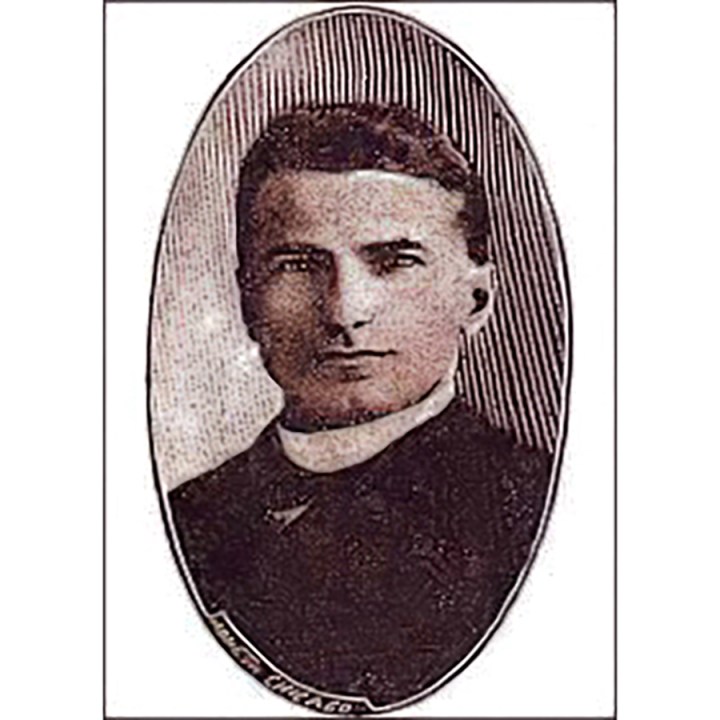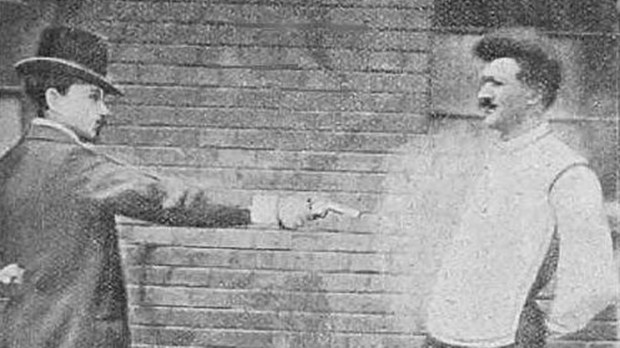Lenten Campaign 2025
This content is free of charge, as are all our articles.
Support us with a donation that is tax-deductible and enable us to continue to reach millions of readers.
The bulletproof vest is a staple of law enforcement equipment. While the modern vests bear little resemblance to the earliest prototypes, their function remains the same: to save lives. What many do not realize, however, is that the lives that have been saved can be credited, at least in part, to a Catholic priest.
At the dawn of the 20th century, guns were everywhere. The mechanization of the Industrial Revolution made firearms more accessible than ever, and many adults carried them regularly.
As one might expect, increased access to guns meant a similar increase in gun violence. While not the Wild West, there were quite a few attempted assassinations of public figures. In Chicago, this situation came to a head in 1893, when Mayor Carter Henry Harrison was shot and killed in his own home.
Fr. Casimir Zeglen
This sent Chicago’s political climate into an uproar and left many citizens unsettled. It was then that an unlikely hero emerged in the form of a Catholic priest. Fr. Casimir Zeglen of St. Stanislaus Roman Catholic Church had already been developing an article of clothing that could stop high velocity projectiles in their tracks. With the assassination of Harrison, however, he began to devote himself to crafting body armor.

According to Cult of Mac, Fr. Zeglen began experimenting with textiles. The early years were slow going, with little results found in his cloth made from moss, hair, and steel shavings. It wasn’t until he discovered a medical report from 1887 that true progress was made. The coroner had found that a silk handkerchief slowed the movement of a bullet through a man’s pocket.
Excited by the possibilities, Fr. Zeglen switched his focus towards silk, where he found his success. It took years of testing, but by 1897 he had perfected his bulletproof vest and applied for a patent. At this point, the vest was made of layers of linen, wool, and silk. It would do for low-caliber pistols of the era, but the design needed to add a steel plate to protect against higher caliber rifles.
The design was further refined when Fr. Zeglen teamed with Jan Szczepanik, also called “The Polish Edison.” Szczepanik helped take the vest to new heights, even going so far as to create an automated production line to manufacture them. The pair eventually parted ways, but Fr. Zeglen took his newfound knowledge back to the States to seek investors.
Dangerous demonstrations
NPR featured a 1902 article from The Brooklyn Eagle, which reports on the vest and a demonstration by Fr. Zeglen in Montauk, New York. There, the vest was tested against several firearms of varying caliber, all of which were stopped. It’s a good thing too, because Fr. Zeglen was reportedly wearing the vest during the demonstration.The Brooklyn Eagle described the vest this way:
“A fabric produced there, which is one-eighth of an inch in thickness, four ply, presents this perfection of weave, and all efforts to penetrate it with bullets have proved futile. The Rev. Mr. Zeglen himself submitted to a test in Chicago. He put on a vest of the material and an expert revolver shot fired at the vest at eight paces and no one of the bullets at all disturbed Mr. Zeglen.”
That’s right, Fr. Zeglen routinely put his money where his mouth was and took the shots. The Catholic priest donned the protective vest for such demonstrations many times during its development. There are no records of how many times Fr. Zeglen was shot in these years, but he did equate the pain to being poked with a cane.
Success
The bulletproof vest became very popular, although the price tag drastically limited its prominence. The price of silk was quite high and the vest cost the equivalent of many thousands of dollars by today’s standards. Still, those who could afford them found peace of mind as reports began to rise of the effectiveness of Fr. Zeglen’s silk.
Quite possibly the most prominent instance of the silk’s success was when it saved King Alfonso XIII of Spain. The monarch had used the material of the silk vest to cover his royal carriage. When a homemade grenade was chucked at his vehicle, not a single bit of shrapnel made it through.
While modern vests are made of a different material, Kevlar, they still utilize the thread weaving techniques developed by Fr. Casimir Zeglen. The Polish Catholic priest’s contributions are kept alive each time a bullet is stopped by a vest. It is estimated that since the 1960s more than 3,000 lives of police officers have been protected from this technology in the United States alone.
Read more about Fr. Zeglen’s development of the bulletproof vest at Culture.Pl.

